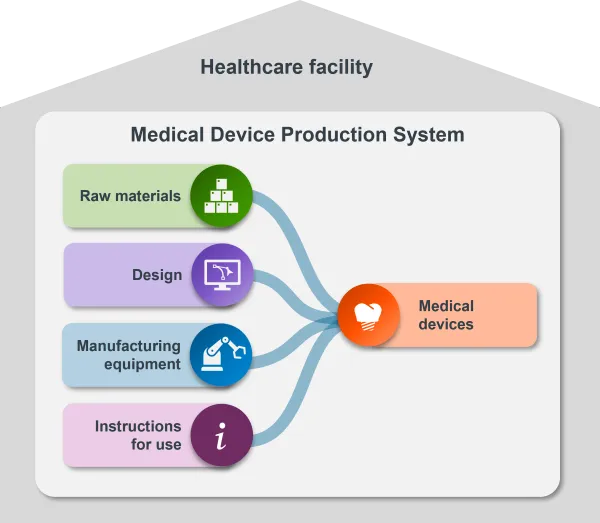We will have limited operations from 15:00 Wednesday 24 December 2025 (AEDT) until Friday 2 January 2026. Find out how to contact us during the holiday period.
What is an MDPS?
An MDPS is an end-to-end system to produce medical devices. It consists of all components needed to make medical devices, including the raw materials, design and manufacturing equipment, and the instructions for operating the system. The medical devices produced by a system also form part of the MDPS. For a system to be an MDPS, it needs to be used by a health professional, or a suitably qualified person within a healthcare facility.


